
How To Grow Philodendron Birkin
Looking for the best way to keep your Birkin thriving? Our Birkin plant care guide walks you through everything from watering and light to soil, humidity, and repotting so you can enjoy this stunning variegated Philodendron in your home. Here’s how:
- To care for a Philodendron Birkin, position it in medium to bright, indirect light.
- Use a well-draining potting mix.
- Water when the top inch of soil is dry.
- Keep it in a room with temperatures ranging from 65-80°F.
- Feed it with a balanced liquid fertilizer every 6 weeks during the growing season.
If you’re a houseplant enthusiast, you’ve probably heard of the stunning Birkin plant. With its variegated leaves and compact size, the Birkin is a beautiful addition to any indoor garden.
But how can you ensure your plant thrives? Our guide to Birkin plant care has got you covered.
From soil and pots to fertilizing, temperature, humidity, and more, we’ll help you keep your Birkin healthy and happy.
Introduction To Birkin Plant Care
 Philodendron Birken Live Plant | Indoor House Plant for Home Decor, Room Decor, Office Decor | Air Purifying Philodendron Houseplant | Elegant Plants Live Houseplants
Philodendron Birken Live Plant | Indoor House Plant for Home Decor, Room Decor, Office Decor | Air Purifying Philodendron Houseplant | Elegant Plants Live Houseplants
Have you recently become the proud owner of a Birkin plant and want to make sure you’re taking the best care of it?
Or are you considering adding this stunning variegated plant to your collection and want to know what to expect?
Either way, you’ve come to the right place! Our introduction to Birkin plant care covers everything you need to know, from choosing the right soil and pots to fertilizing, watering, and ensuring the perfect lighting conditions.
We’ll also provide you with expert tips on maintaining and propagating your plant, as well as how to deal with common problems like root rot and pests.
So let’s dive in and make sure your Birkin is thriving!
Explanation of Philodendron Birkin
The Philodendron Birkin is a stunning tropical plant that has become a popular addition to many indoor gardens.
With its dark green oval-shaped leaves and striking white stripes, this compact plant adds a touch of elegance to any room.
The Birkin is a cultivar of the Philodendron Rojo Congo and was specifically bred to be a designer plant within the Araceae family.
Originally from South America, this plant thrives in warm, humid environments, making it an ideal choice for indoor cultivation.
Importance of caring for the plant
Caring for your Birkin plant is essential if you want it to thrive and produce new growth.
Proper care ensures that the plant remains healthy, retains its beautiful variegation, and lives a long life.
Caring for your Birkin involves ensuring it has the right soil, water, light, temperature, and humidity conditions.
You also need to watch out for common problems like pests and diseases and take steps to prevent or address them.
With the right care, your Birkin plant will reward you with new leaves, healthy growth, and a stunning presence in your home.
Philodendron Birkin Plant Care Reference Guide
| Characteristic | Details |
|---|---|
| Common Name | Birkin Philodendron |
| Botanical Name | Philodendron ‘Birkin’ |
| Native Habitat | Cultivar, not naturally occurring; Philodendron species are native to South America’s tropical rainforests |
| Plant Type | Evergreen tropical houseplant |
| Growth Pattern | Compact, upright with variegated foliage |
| Mature Size | 1.5–3 feet tall and wide indoors |
| Watering | Keep soil lightly moist; allow top inch to dry before watering |
| Light/Sun Exposure | Bright, indirect light; avoid harsh direct sun |
| Soil Type | Well-draining, airy potting mix rich in organic matter |
| Soil pH | Slightly acidic to neutral (5.5–7.0) |
| Temperature | 65–85°F (18–29°C) |
| Humidity | Prefers 60% or higher; tolerates average indoor humidity |
| Bloom Time & Flower Color | Rarely blooms indoors; grown for striking white-striped leaves |
| Potential Problems | Root rot from overwatering, yellowing leaves from poor light, pests like spider mites or mealybugs |
| Repotting | Every 1–2 years when roots outgrow pot; refresh soil mix |
| Hardiness Zones (USDA) | 10–12 (grown indoors elsewhere) |
Why Choose Birkin Philodendron Plants?
With its dark, luxuriant foliage adorned with exotic variegation, the Birkin Philodendron Plant is truly a unique beauty.
What sets it apart is not just its stunning appearance, but also its effortless growth.
This tropical plant effortlessly thrives in a variety of indoor environments, making it a perfect choice for plant enthusiasts.
The Birkin Philodendron< Plant’s vibrant green leaves with variegated cream-yellow stripes add an element of exotic flair to any space.
Whether you place it in a small container in a well-lit bathroom or showcase it in a large pot in your entryway, it will undoubtedly catch the eye and elevate the aesthetic of your surroundings.

Not only does the Birkin possess aesthetic appeal, but it also offers ease of care.
This low-maintenance plant is relatively easy to grow and maintain, even for those new to plant care.
With its love for humid conditions and bright, indirect light, it can adapt to a range of indoor spaces, bringing its unique charm wherever it’s placed.
So, whether you’re seeking a striking centerpiece for your living room or a touch of greenery to brighten up your workspace, the Birkin Philodendron Plant is an excellent choice.
Its variegated foliage and effortless growth make it a delightful addition to any plant collection, promising years of beauty and enjoyment.
Philodendron Birkin Care

Philodendron Birken Live Plant | Indoor House Plant for Home Decor, Room Decor, Office Decor | Air Purifying Philodendron Houseplant | Elegant Plants Live Houseplants
Welcome to the world of Philodendron Birkin care! If you’re lucky enough to have this beautiful plant in your home, it’s essential to know how to care for it properly.
With its unique variegated leaves and slow growth rate, the Birkin requires specific attention to thrive.
But don’t worry, caring for your Birkin is not as complicated as it may seem.
In this section, we will take a deep dive into the specific care requirements that your Birkin needs to grow and thrive.
We’ll cover everything from soil and water to light and temperature, so you can provide your plant with the best possible care.
Quick Care Overview:
Before we dive into the specifics of Birkin care, let’s start with a quick overview of the basics.
The Philodendron Birkin is a slow-growing tropical plant with variegated leaves that require bright, indirect light and consistently moist soil.
Keep the temperature between 65-75F and provide high humidity levels.
Avoid direct sunlight and make sure your soil has good drainage to prevent root rot.
Philodendron Birkin Care Guide:
Philodendron Birkin History:
The Philodendron Birkin is a rare cultivar of the Philodendron Rojo Congo, developed to have variegated, designer leaves within the Araceae family.
It has become a popular choice for indoor gardeners who appreciate its unique appearance.
Philodendron Birkin Identification:
The Birkin has dark green variegated leaves with beautiful light-yellow variations that grow in different pigments. The leaves have an oval shape and can grow up to 3 feet tall.
Philodendron Birkin Growth Facts:
This slow-growing plant requires little maintenance and attention, making it an excellent choice for new plant owners.
New growth emerges in the summer months, and the plant will continue to grow slowly throughout the year.
How Big Does a Philodendron Birkin Get?
When grown indoors, the Philodendron Birkin can reach a height of up to 3 feet tall.
However, it will take several years to reach this size. The plant is slow-growing but will continue to grow as long as it receives proper care.
In the next sections, we will explore in more detail the care requirements for your Philodendron Birkin, including soil and pots, fertilizing, temperature and humidity, maintenance and pruning, repotting, propagation, pests, and diseases.
Philodendron Birkin Light Requirements
 Philodendron Birkin, Live Indoor Plant, 4 inch Pot – Hopewind Plants Shop
Philodendron Birkin, Live Indoor Plant, 4 inch Pot – Hopewind Plants Shop
One of the essential factors in caring for a Philodendron Birkin plant is providing the right amount of light.
As a tropical plant, it thrives in bright indirect light, imitating its natural habitat.
However, too much direct sunlight can damage the leaves and cause them to wilt, while insufficient light can result in slow growth and lack of variegation.
Here are some important things to know about lighting for your Birkin plant:
Bright Indirect Light
We will cover: Understanding what constitutes as bright indirect light and how to provide it for your Birkin plant is important.
Finding the best location in your home to place your Birkin plant to provide adequate light.
How to avoid exposing your Birkin plant to too much direct sunlight.
Low Light Conditions
What to do if you don’t have access to bright indirect light, such as in a low-light room or office space?
Tips for supplementing natural light with artificial grow lights to promote healthy growth.
Light Schedule
Understanding how much light your Birkin plant needs and creating a schedule that works for your plant and your lifestyle.
Knowing how to adjust your light schedule during different seasons to meet the plant’s changing needs.
Best Lighting Conditions for Philodendron Birkin
Proper lighting is crucial for the growth and development of your Philodendron Birkin.
As a tropical plant, this species requires bright, indirect sunlight that mimics its natural habitat in South America.
Too much direct sunlight can lead to scorched leaves, while too little light can stunt growth and lead to yellowing foliage.
To ensure that your Philodendron Birkin is getting enough light, place it near a window with bright, indirect light.
If you have limited natural light, consider supplementing with a grow light to provide the necessary light spectrum for optimal growth.
Low Light Conditions for Philodendron Birkin
While Philodendron Birkin thrives in bright, indirect light, it can also tolerate low light conditions.
If you are placing your plant in a low-light area, such as a north-facing window, make sure to provide some supplemental light to prevent the plant from becoming too leggy.
Avoiding Drafty Windows and Direct Sunlight
In addition to providing the right amount of light, it’s important to protect your Philodendron Birkin from drafty windows and direct sunlight.
Drafts can cause stress and lead to stunted growth or yellowing foliage, while direct sunlight can scorch the leaves.
To avoid these issues, make sure to place your plant away from drafty windows and provide some shade during the hottest part of the day if it is placed in a window with direct sunlight.
A sheer curtain can help to diffuse the light and protect the leaves from damage.
Philodendron Birkin Soil
 Philodendron Birkin (4″ Grower Pot) – Rare Variegated Houseplant – Easy to Grow, Easy to Care Low Light Houseplants – Colorful Foliage Air-Purifying Plant
Philodendron Birkin (4″ Grower Pot) – Rare Variegated Houseplant – Easy to Grow, Easy to Care Low Light Houseplants – Colorful Foliage Air-Purifying Plant
If you want your Birkin Philodendron plant to thrive, it’s essential to choose the right pot and soil for it.
The plant needs a growing medium that provides excellent drainage and aeration while retaining moisture to prevent root rot.
In this section, we’ll explore everything you need to know about soil and pots for your Birkin plant.
Importance of Good Drainage:
Good drainage is crucial to the health and well-being of your Philodendron Birkin.
Without adequate drainage, your plant’s roots can become waterlogged and begin to rot, leading to stunted growth, yellowing leaves, and even death.
We’ll explore some tips on ensuring proper drainage for your Birkin plant.
Coco Coir as a Soil Medium:
Coco coir is a popular choice among plant enthusiasts as a soil medium.
Using coco coir in your Philodendron Birkin’s potting mix offers numerous benefits that contribute to the overall health and growth of your plant.
First and foremost, coco coir has excellent water retention properties, allowing it to hold moisture while still providing good drainage.
This helps prevent overwatering and ensures that your Birkin’s roots receive the right amount of hydration.
Additionally, coco coir is a sustainable and renewable resource, making it an environmentally friendly choice for your plant care routine.
To properly prepare coco coir bricks for use, start by rehydrating them with water. This process involves soaking the coir in water until it expands and becomes fluffy.
Once rehydrated, squeeze out any excess water and fluff it up with your hands to create a loose texture.
This ensures that the coco coir is adequately moist and ready to be incorporated into your potting mix.
You don’t need to do this if you use loose bagged coco but the bricks are much easier to ship or store.
When using coco coir in your potting mix, it’s essential to blend it with other components to create a well-balanced growing medium.
Adding 25-30% perlite helps improve the overall drainage of the mix, preventing waterlogging and promoting healthy root growth.
Aim for a mix that provides a balance of water retention and aeration to create an ideal environment for your Philodendron Birkin.
Incorporating coco coir into your Philodendron Birkin’s potting mix can improve the overall moisture management and nutrient availability for your plant.
Its water-holding capacity helps prevent drying out between waterings, reducing the risk of underwatering, while its fibrous structure promotes good airflow and root development.
By making the most of coco coir, you can provide your Birkin with an optimal growing environment and contribute to its overall health and vitality.
Philodendron Birkin Pot Size
Choosing the right pot size and material is also important for the overall health and growth of your Birkin plant.
Too small of a pot can restrict root growth, while too large of a pot can lead to over-watering and root rot.
We’ll provide some guidance on selecting the right pot size for your plant’s current and future growth.
When choosing a pot size, consider the current size of your Birkin plant and its growth potential.
It’s generally recommended to select a pot that is about 1-2 inches larger in diameter than the current pot.
This provides enough room for the roots to expand and prevents the plant from becoming too crowded.
It’s also essential to consider the growth rate of your Philodendron Birkin. While it is a relatively slow-growing plant, it has the potential to reach heights of up to 3 feet indoors.
Therefore, selecting a pot that can accommodate its future growth is advisable. This way, you won’t need to repot the plant too frequently and disturb its root system.
Additionally, pay attention to the pot’s depth. Philodendron Birkin has a relatively shallow root system, so a pot that is deep enough to provide stability but not excessively deep is ideal.
Drainage Holes
Remember to choose a pot with adequate drainage holes to allow excess water to escape and prevent waterlogged soil, which can lead to root rot.
Good drainage is essential for the overall health and well-being of your Birkin plant.
By selecting the right pot size for your Philodendron Birkin, you can provide it with the appropriate space for root growth and ensure its long-term health and vitality.
Philodendron Birkin Watering
Watering is an essential aspect of taking care of your Philodendron Birkin plants. However, it can be challenging to know how much and how often to water.
Overwatering or underwatering can lead to various problems, such as root rot, yellow leaves, and stunted growth.
In this blog section, we’ll go over the basics of watering your Birkin plants and advanced techniques to help you maintain healthy and beautiful plants.
Watering Basics
How often to water Birkin plants:
The frequency of watering depends on factors such as the plant’s size, pot size, and environment. Generally, you should wait until the top inch of soil feels dry before watering your Birkin plant.
The importance of drainage holes in pots:
Drainage holes in pots allow excess water to escape, preventing waterlogging and root rot.
The best watering techniques for Birkin plants:
Watering from the bottom using a saucer or letting water flow through the pot for several minutes allows the soil to absorb the water gradually.
Testing soil moisture levels:
Checking the moisture level of the soil with a moisture meter or sticking your finger into the soil can help you determine whether your plant needs watering.
Water Quality
Why tap water can be harmful:
Tap water contains minerals and chemicals such as chlorine, fluoride, and salts that can build up in the soil and harm the plant’s roots.
The benefits of using filtered or distilled water:
Filtered or distilled water is free of harmful chemicals and minerals and helps prevent the buildup of salts and minerals in the soil.
Alternatives to tap water for watering Birkin plants:
Rainwater or melted snow can be excellent alternatives to tap water.
Advanced Watering Techniques
Watering during the growing season:
During the growing season, Birkin plants need more frequent watering and higher humidity levels.
Watering during the dormant season:
In the dormant season, Birkin plants require less frequent watering, and it’s essential to avoid overwatering.
Using a pebble tray to increase humidity:
Placing a tray of pebbles and water underneath the plant’s pot can increase humidity levels and prevent the soil from drying out too quickly.
Troubleshooting Watering Problems
Signs of overwatering and underwatering:
Yellow leaves, soggy soil, and a foul smell are signs of overwatering, while dry, crispy leaves and dry soil are signs of underwatering.
Fixing overwatering and underwatering issues:
Adjusting your watering frequency and techniques can help fix overwatering and underwatering issues.
Watering Takeaways
• Proper watering is crucial for the health and growth of your Philodendron Birkin plant.
• Always consider factors such as pot size, soil moisture, and the environment when watering your plant.
• With the right watering techniques, you can enjoy healthy and thriving Birkin plants.
Fertilizing Philodendron Birkin

Fertilizing is an essential aspect of caring for your Philodendron Birkin plant. It provides the necessary nutrients to support healthy growth and vibrant foliage.
In this section, we will discuss the importance of fertilizing your Birkin plant, the best types of fertilizer to use, and how to fertilize your plant for optimal results.
Whether you’re a seasoned gardener or new to plant care, this guide will help you keep your Birkin plant thriving.
The Importance of Regular Fertilization
Proper fertilization is an essential component of successful plant care, and Philodendron Birkins are no exception.
These plants require regular feeding to maintain their health and promote growth.
Balanced Fertilizers
When selecting a fertilizer for your Philodendron Birkin, it is crucial to choose a balanced formula that contains equal amounts of nitrogen, phosphorus, and potassium (N-P-K).
This balance will ensure that your plant receives all the necessary nutrients it needs to thrive.
Calcium and Magnesium Supplementation
In addition to a balanced fertilizer, Philodendron Birkins also benefit from calcium and magnesium supplementation.
These essential nutrients help maintain the plant’s overall health and promote strong, healthy growth.
Adding a calcium and magnesium supplement to your fertilizer regimen can ensure that your plant has access to these vital nutrients.
 If you are using coco coir this is especially important. Use a Cal-Mag supplement.
If you are using coco coir this is especially important. Use a Cal-Mag supplement.
Always follow directions as adding too much fertilizer is harmful to your plant.
I think it is a good idea to start with half-strength fertilizer and see how your Birkin reacts to it.
Temperature and Humidity
If you want your Philodendron Birkin to thrive, it’s important to understand how temperature and humidity affect it.
These plants are native to the tropical regions of South America, where they are used to warm, humid conditions.
In this section, we’ll discuss the ideal temperature and humidity ranges for Philodendron Birkin, as well as some tips on how to maintain these conditions in your home.
Ideal Temperature Range:
Maintaining the ideal temperature range is crucial for the growth and health of any plant.
The Philodendron Birkin thrives in a temperature range between 65-85°F (18-30°C).
If the temperature falls below 55°F (13°C), it can cause damage to the plant.
Importance of High Humidity:
The Philodendron Birkin, like most tropical plants, requires high humidity levels to grow and remain healthy.
The natural habitat of the Birkin plant is the tropical rainforest, which has a high humidity level of 60-80%.
In indoor conditions, humidity levels can drop to as low as 30-40%, which can cause stress to the plant.
Ways to Increase Humidity:
There are several ways to increase the humidity levels around your Philodendron Birkin.
You can use a humidifier, place a pebble tray filled with water near the plant, or mist the plant regularly with a spray bottle.
These methods can help maintain the ideal humidity levels and prevent the plant from becoming stressed.
Birkin Pruning And Maintenance
Taking care of a Philodendron Birkin plant goes beyond watering and fertilizing.
Proper maintenance and pruning are essential to keep the plant healthy and looking its best.
In this section, we’ll cover the basics of plant maintenance and pruning, including the tools you need, how often you should prune, and the benefits of regular pruning.
By the end of this section, you’ll be equipped with all the knowledge you need to keep your Philodendron Birkin looking its best.
Removing Dead Leaves:
It’s essential to remove dead and yellow leaves to promote healthy growth and prevent the spread of diseases.
How to Prune a Birkin Plant:
Pruning your Birkin plant is an essential part of its care routine, as it helps maintain its shape, size, and overall health.
It also encourages new growth and can help rejuvenate the plant. Here are some steps to follow when pruning your Birkin plant:
Assess the plant: Take a close look at your Birkin plant and identify any dead, yellowed, or damaged leaves. These should be the first ones to be pruned.
Sterilize your pruning tools: Before you start pruning, make sure your pruning tools, such as shears or scissors, are clean and sterilized.
This helps prevent the spread of diseases or pests.
Trim dead or damaged leaves: Using your sterilized pruning tools, carefully remove any dead or damaged leaves by cutting them as close to the stem as possible.
This helps improve the plant’s appearance and prevents the spread of any potential diseases.
Manage plant size and shape: If your Birkin plant is becoming too large or leggy, you can prune back the stems to maintain a more compact shape.
Cut back stems just above a leaf node or a set of leaves. This encourages branching and new growth.
Promote new growth: To encourage new growth and bushiness, you can selectively prune back longer stems or pinch off the tips of stems.
This redirects the plant’s energy to the lower parts and stimulates the growth of new shoots.
Regular maintenance: Regularly inspect your Birkin plant for any new growth that needs pruning or maintenance.
Removing spent flowers or brown leaf tips can improve the plant’s overall appearance and health.
Remember to always use clean and sharp pruning tools to make clean cuts and minimize damage to the plant.
Additionally, it’s a good practice to sanitize your pruning tools between cuts, especially if you are dealing with a diseased or infested plant.
By following these pruning practices, you can maintain the shape, size, and health of your Birkin plant while promoting new growth and keeping it visually appealing.
Cleaning And Dusting:
Dust on the leaves of house plants can inhibit photosynthesis so it’s a good idea to use a damp cloth and remove any dust on a regular basis.
Philodendron Birkin Repotting
Repotting is an essential part of maintaining your Philodendron Birkin’s health and ensuring its growth.
The plant’s roots need space to spread and absorb nutrients from the soil. As it grows, it can outgrow its current pot, leading to stunted growth and other problems.
In this section, we’ll explore when and how to repot your Birkin plant, and what to consider when selecting a new pot.
Signs that a plant needs to be repotted
As your Birkin plant grows, it will eventually outgrow its current pot and need to be repotted.
Some signs that your plant needs a new pot include roots growing out of the drainage holes, roots tightly circling the bottom of the pot, and the soil drying out quickly after watering.
Best time to repot
The best time to repot your Birkin plant is during the growing season, which is typically during the spring and summer months.
This will give your plant ample time to adjust to its new pot before the colder months arrive.
Repotting process
To repot your Birkin plant, choose a pot that is one size larger than its current pot and has drainage holes.
Fill the bottom of the pot with fresh potting soil and gently remove the plant from its current pot.
Loosen the roots and remove any dead or damaged roots.
Place the plant in the new pot and fill in the gaps with fresh soil, pressing it down gently.
The plant should be adjusted so that it is at the same soil level it was growing at before and you want to leave it an inch or two below the pot rim to make it easy to water.
Water the plant thoroughly and place it in a spot with bright, indirect light to help it adjust to its new surroundings.
Philodendron Birkin Propagation

Philodendron Birkin (4″ Grower Pot) – Rare Variegated Houseplant – Easy to Grow, Easy to Care Low Light Houseplants – Colorful Foliage Air-Purifying Plant for Delivery
If you’re a fan of the Philodendron Birkin, why not try your hand at propagating this beautiful plant?
Not only is it a great way to grow your collection, but it’s also a cost-effective way to share the plant with others.
In this section, we’ll cover everything you need to know about propagating your Philodendron Birkin.
From stem cuttings to air layering, we’ll show you the different methods you can use to create new plants. So let’s get started!
Benefits of propagating a Birkin plant
Propagating a Birkin plant is an excellent way to create new plants and expand your collection without spending a lot of money.
Besides being cost-effective, propagating a Birkin plant also allows you to share your love of plants with friends and family.
Additionally, propagating your Birkin plant can help keep the parent plant healthy and prevent it from becoming too crowded.
Stem-cutting propagation method
Stem-cutting propagation is one of the most common methods used to propagate a Birkin plant.
This method involves taking a stem cutting from the parent plant and rooting it in water or soil until it grows into a new plant.
• To do this, choose a healthy stem and use a clean, sharp pair of pruning shears to make a clean cut just below a node.
• Remove any leaves from the bottom third of the stem and dip the cut end in rooting hormone.
• Place the cutting in a container filled with moist soil and cover it with a plastic bag to create a mini greenhouse.
• Keep the cutting in a warm, bright spot and mist it regularly to keep the humidity high.
Water propagation method
Water propagation is another easy way to propagate your Birkin plant. This method involves rooting stem cuttings directly in water until they grow roots and can be planted in soil.
• To do this, select a healthy stem and remove any leaves from the bottom third of the stem.
• Place the cutting in a clear glass jar filled with water, making sure the cut end is submerged.
• Change the water every few days and keep the jar in a warm, bright location.
• Within a few weeks, the cutting should develop roots and can be transplanted into soil.
Air Layering
Air layering is a propagation technique used to create new plants from existing ones.
It involves creating a root system on a stem while it is still attached to the parent plant.
Here’s a step-by-step guide on how to perform air layering:
• Select a healthy stem: Choose a mature, healthy stem from the parent plant that is suitable for air layering. Ideally, it should be flexible and about pencil-thickness.
Prepare the materials: Gather the necessary materials, including a sharp knife or pruning shears, rooting hormone (optional), sphagnum moss or a rooting medium, plastic wrap or a clear plastic bag, and twist ties or string.
Identify the air layering location: Look for a section on the stem that is about 12-18 inches below the tip.
This area should have several leaf nodes and be free of any damage or diseases.
Make an incision: Using a sharp knife or pruning shears, make a 1-2 inch vertical cut on the stem, going about halfway through the stem.
This cut should go just below a leaf node.
Apply rooting hormone (optional): If desired, apply a rooting hormone powder or gel to the exposed cut.
This can help stimulate root growth, although it is not necessary for successful air layering.
Prepare the rooting medium: Moisten the sphagnum moss or rooting medium with water.
Squeeze out any excess water, but ensure that it remains damp.
Wrap the rooting medium: Take a handful of the moistened sphagnum moss or rooting medium and wrap it around the incision on the stem.
Make sure the cut area is completely covered, and gently press the medium against the stem to hold it in place.
Secure with plastic wrap: Wrap the covered area with clear plastic wrap or place it in a clear plastic bag. This helps create a moist and humid environment for root development.
Secure the plastic wrap with twist ties or string, ensuring it is tightly sealed around the stem.
Monitor and maintain: Check the air layer periodically to ensure the moss remains moist.
Mist it with water if necessary. Avoid direct sunlight, as it can cause overheating inside the plastic wrap.
Wait for roots to form: Over time, roots will start to develop from the stem within the moss.
This process can take several weeks to a few months, depending on the plant species.
Separating the new plant: Once the roots have developed sufficiently, carefully cut below the root ball, severing it from the parent plant.
Plant the new plant in a pot or the desired location using a well-draining potting mix.
Air layering can be a successful method of propagation, allowing you to create new plants that are genetically identical to the parent plant.
It is particularly useful for plants that are difficult to propagate through other methods, and it can result in well-established plants with a developed root system.
Pests and Diseases
Philodendron Birkins are known for their resilience, but just like any other houseplant, they can be affected by pests and diseases.
It’s important to be aware of common problems that can affect your Birkin and know how to treat them.
In this section, we’ll go over some of the most common pests and diseases that can affect Philodendron Birkins and provide tips on how to prevent and treat them.
Common Pests Affecting Birkin Plants
Birkin plants are known for their resilience, but like any other plant, they are not immune to pests and diseases.
Common pests affecting Birkin plants include spider mites, thrips, mealybugs, and scale insects.
These pests can cause damage to the plant’s leaves, stems, and roots, leading to stunted growth, yellowing leaves, and even death if left untreated.
Spider Mites and Thrips
Spider mites and thrips are two of the most common pests that affect Birkin plants.
Spider mites are tiny pests that can be difficult to spot with the naked eye.
They suck the sap out of the leaves, causing them to yellow and drop off the plant.
Thrips, on the other hand, are small, winged insects that can cause similar damage to spider mites.
They feed on the leaves and flowers, leaving them with silver, scarred spots.
Those are not the only insects that can affect Birkin plants, but they are among the most common.
Other insects that can infest Birkin plants include mealybugs, scale insects, and aphids.
These pests can be controlled with a spray of insecticidal soap or neem oil. Make sure to follow directions and thoroughly cover the plant when you spray including leaf undersides.
Root Rot and Other Diseases
In addition to pests, Birkin plants are also susceptible to diseases, such as root rot.
This fungal disease is caused by overwatering and poor drainage, leading to the roots becoming waterlogged and eventually rotting.
Other diseases that can affect Birkin plants include bacterial leaf spot, powdery mildew, and stem rot.
Improved airflow around your plant and removing debris around the plants can help prevent disease.
Remove infected leaves to prevent spread and use a fungicide. Powdery mildew can be treated with a baking soda spray.
Prepare the baking soda spray: In a spray bottle, mix 1 tablespoon of baking soda with 1 quart of water. Add a few drops of liquid dish soap to help the solution adhere to the plant’s leaves.
For root rot trim off damaged roots. Repot in fresh soil and avoid overwatering.
Proper care and maintenance can help prevent these issues from occurring, but if you notice any signs of pests or disease, it’s important to act quickly to prevent further damage to the plant.
Philodendron Birkin Poisonous
Toxicity to humans:
Philodendron Birkin is known to be toxic to humans when ingested. This is because it contains calcium oxalate crystals, which can cause irritation and swelling of the mouth, tongue, and throat.
In severe cases, it can lead to difficulty breathing and even death if not treated promptly. Therefore, it is essential to keep the plant out of reach of children and to wash your hands thoroughly after handling it.
Toxicity to pets:
Like many other Philodendron plants in the Araceae family, Philodendron Birkin is also toxic to pets, including cats and dogs.
The plant’s leaves and stem contain calcium oxalate crystals, which can cause a range of symptoms in pets, including vomiting, diarrhea, and difficulty breathing.
In severe cases, it can lead to organ failure and even death. Therefore, it is essential to keep the plant out of reach of pets and to seek veterinary help immediately if your pet ingests any part of the plant.
Ways to prevent poisoning in pets or children:
Keep the plant out of reach:
To prevent accidental ingestion, the best way is to keep the Philodendron Birkin plant out of reach of children and pets. This can be achieved by placing it on a high shelf or hanging it from the ceiling.
Educate your family members:
Make sure that your family members, especially young children, are aware of the plant’s toxicity and know not to touch or eat any part of it.
Supervise pets and children:
If you have young children or pets, it is best to supervise them when they are around the plant to ensure that they do not accidentally ingest any part of it.
Consider alternative plants:
If you are concerned about the toxicity of the Philodendron Birkin plant, you may want to consider alternative plants that are safe for pets and children, such as spider plants, Boston ferns, or African violets.
Seek medical attention:
If you suspect that your child or pet has ingested any part of the Philodendron Birkin plant, seek medical attention immediately.
Philodendron Birkin Price
Philodendron Birkin has become a popular houseplant in recent years, thanks to its striking foliage and ease of care.
As with any popular plant, the price of a Birkin plant can vary depending on factors such as size, location, and availability.
If you’re considering adding this beautiful plant to your collection, it’s important to have an idea of the potential costs involved.
In this section, we’ll take a closer look at the factors that can influence the price of a Philodendron Birkin plant and give you some tips on finding a good deal.
Factors affecting price:
One of the primary factors that can affect the price of a Birkin is availability.
Because the Birkin is a relatively slow-growing plant, there may be limited numbers available at any given time, especially in more remote areas.
Additionally, high demand for the plant can drive up prices, particularly for those with desirable characteristics such as larger size, mature growth, or variegation.
Sellers who are located in areas with a higher cost of living or who have a strong reputation for quality and customer service may also charge more for their plants.
Average prices:
The price of a Philodendron Birkin can vary widely depending on where you purchase it from.
Retail nurseries and garden centers may have more affordable prices, typically ranging from $20-$50 depending on the size and maturity of the plant.
Online marketplaces and specialty plant shops may charge more, with prices ranging from $50-$100 or more for larger or more mature specimens.
Auction sites and rare plant sellers may have the highest prices, with some Birkins selling for several hundred dollars or more.
Regardless of where you purchase your Birkin, it’s important to remember that the plant’s price is not necessarily an indicator of its quality or health.
With a little bit of research and care, you can enjoy a beautiful and thriving Philodendron Birkin at any price point.
Philodendron Birkin Leaves Falling Off
If you have noticed that your Philodendron Birkin plant’s leaves are falling off, you might be wondering what could be causing it.
Several factors could lead to the loss of leaves, including over or under-watering, poor lighting conditions, or pests.
In this section, we’ll discuss the common causes of Philodendron Birkin leaves falling off and how you can fix the issue to keep your plant healthy and thriving.
Causes of leaf drop:
Philodendron Birkin is a slow-growing plant that is relatively easy to care for. However, it can still experience problems, such as leaves falling off.
There are several reasons why Birkin leaves may drop, including underwatering, overwatering, low humidity, pest infestations, and lack of light.
In some cases, the plant may also shed its leaves due to natural causes, such as old age.
Prevention and treatment:
To prevent leaf drop, it’s important to provide your Birkin plant with proper care, including the right amount of water, light, and nutrients.
If you notice leaves falling off, identify the cause and take steps to correct it.
If the problem is related to watering, adjust your watering schedule and make sure the soil is draining properly.
If the humidity is low take steps to increase it by misting, using a pebble tray or a humidifier.
If pests are the issue, treat the plant with insecticidal soap or neem oil.
If the issue is low light move the plant to a brighter location or consider using an LED grow light.
Finally, if the problem persists, consult with a plant care expert to help diagnose and treat the issue.
Philodendron Birkin Losing Color Or Fading
Philodendron Birkin is a beautiful tropical plant that has become a popular choice for indoor gardening enthusiasts.
This plant features stunning variegated foliage with deep green and creamy white stripes that can add a touch of elegance to any room.
However, over time, the colors of the Birkin leaves may start to fade and lose their vibrancy.
In this blog post, we will explore the causes of this problem and provide some tips on how to prevent and treat it.
Causes of Fading Colors
Excessive Direct Sunlight
Direct sunlight can be damaging to Philodendron Birkin leaves, causing them to fade and even turn yellow or brown.
Too much sun exposure can lead to sunburn and heat stress, which can compromise the plant’s health and appearance.
Low Light Conditions
On the other hand, inadequate light can also cause the Birkin leaves to lose their colors and become dull.
Philodendron Birkin needs bright, indirect light to thrive and maintain its vibrant foliage. If the plant is kept in a dark or dimly lit room, it may start to fade and lose its luster.
Inadequate Humidity Levels
Philodendron Birkin is a tropical plant that thrives in high-humidity environments. If the air is too dry, the plant may start to lose moisture, causing its leaves to dry out and become discolored.
Low humidity levels can also make the plant more vulnerable to pest infestations like spider mites and other problems.
Nutrient Deficiencies
A lack of essential nutrients like nitrogen, phosphorus, and potassium can also cause the Birkin leaves to fade and lose their colors. Calcium and magnesium deficiencies can also be a problem.
These nutrients are crucial for healthy growth and development, and without them, the plant may become weak and prone to disease.
Pest Infestations
Pests like spider mites and mealybugs can suck the sap from the Birkin leaves, causing them to lose their colors and become disfigured. If left untreated, pest infestations can also weaken the plant and make it more susceptible to other problems.
Prevention and Treatment
Adjusting Light Conditions
To prevent color fading due to light issues, it’s important to find the right balance of brightness and shade for your Philodendron Birkin.
Try placing the plant in a spot that receives bright, indirect light for several hours a day, but avoid exposing it to direct sunlight.
If the plant is already experiencing light-related fading, you may need to move it to a more suitable location.
Increasing Humidity Levels
One way to prevent color fading due to dry air is to increase the humidity levels around the plant.
You can do this by misting the leaves with water, placing a tray of water near the plant, or using a humidifier.
Keeping the soil moist can also help to maintain healthy moisture levels in the plant.
Fertilization
To prevent nutrient-related fading, it’s important to fertilize your Philodendron Birkin regularly with a balanced fertilizer that also includes needed micronutrients.
This will help to provide the plant with the necessary nutrients for healthy growth and development.
Be sure to follow the instructions on the fertilizer package and avoid over-fertilization, which can lead to other problems.
Pest Control
If your Philodendron Birkin is experiencing color fading due to pest infestations, you may need to treat it with an insecticide or other pest control method.
Be sure to identify the type of pest and use the appropriate treatment, as different pests may require different approaches.
Fading Colors Conclusion
In conclusion, maintaining the vibrant colors of your Philodendron Birkin is crucial to the overall health and beauty of the plant.
By understanding the factors that cause color fading and implementing the preventative measures outlined in this post, you can ensure that your Birkin plant remains healthy and visually stunning for years to come.
Remember to provide adequate lighting and humidity, fertilize regularly, and keep a watchful eye out for any signs of pest infestation or nutrient deficiencies.
The importance of maintaining healthy colors
Maintaining the colors of a Philodendron Birkin plant is important not only for aesthetic purposes but also for the health of the plant.
Faded or discolored leaves can be a sign of underlying issues that need to be addressed.
Final tips and advice for Philodendron Birkin plant care
To keep your Philodendron Birkin healthy and vibrant, it is important to provide it with the right amount of light, humidity, and nutrients.
Regular maintenance, such as pruning and pest control, can also help prevent issues that can lead to faded colors.
With proper care, your Philodendron Birkin can thrive and maintain its beautiful colors for years to come.
Philodendron Birkin FAQ
Philodendron Birkin is a popular houseplant known for its beautiful variegated leaves and ease of care. However, as with any plant, there are some common questions that arise when it comes to its care.
In this FAQ section, we will address some of the most frequently asked questions about Philodendron Birkin to help you care for your plant and keep it healthy and thriving.
Q: How much sun does a Birkin plant need?
A: Birkin plants require bright indirect light, but direct sunlight can harm their leaves.
It’s best to place them near a north or east-facing window where they can receive enough light without being exposed to the sun’s harsh rays.
Q: Do Birkin plants like to be misted?
A: Birkin plants enjoy high humidity levels, but misting them may not be the best method to achieve this.
Misting can promote fungal growth and disease if overdone. Instead, place a humidifier nearby, or use a pebble tray filled with water to increase humidity levels.
Q: Why are the leaves on my Birkin plant turning brown?
A: Brown leaves on a Birkin plant can be a sign of several problems, including overwatering, underwatering, low humidity levels, or pest infestations.
It’s important to identify the root cause of the issue and adjust your care routine accordingly.
Q: Is philodendron Birkin a good indoor plant?
A: Yes, philodendron Birkin is a great indoor plant. It is low-maintenance and can thrive in a variety of indoor environments. It also has attractive variegated leaves that can add a pop of color to any room.
Q: Where should I put my philodendron Birkin?
A: Philodendron Birkin plants prefer bright, indirect light and high humidity levels.
It’s best to place them near a north or east-facing window, away from direct sunlight. They also enjoy warm temperatures and can benefit from being placed near a humidifier.
Q: Is Philodendron Birkin hard to care for?
A: Philodendron Birkin is relatively easy to care for, as long as you provide it with proper light, humidity, and water.
However, it is important to monitor for pests and diseases and adjust your care routine accordingly.
Q: How big will a philodendron Birkin get?
A: Philodendron Birkin plants can grow up to 2-3 feet in height, with leaves that can reach up to 6 inches in length.
However, their growth rate can vary depending on environmental factors and care routines.
Q: How long does philodendron Birkin last?
A: With proper care, a philodendron Birkin plant can last for over 20 years. However, their lifespan can be affected by factors such as environmental conditions, pests and diseases, and care routines.
Birkin Plant Care Tips And Tricks Final Thoughts
Congratulations, you made it to the end of our comprehensive guide on Philodendron Birkin plant care!
By now, you should have a good understanding of how to properly care for this beautiful tropical plant and keep it thriving.
Remember that maintaining healthy and vibrant Birkin plants takes time, patience, and effort, but the rewards are definitely worth it.
We hope that our guide has provided you with all the information you need to ensure your Philodendron Birkin is happy and healthy for years to come.
Recap of the importance of proper Birkin plant care:

Throughout this post, we’ve covered various aspects of caring for a Philodendron Birkin plant.
This includes lighting, soil and potting, fertilizing, temperature and humidity, maintenance and pruning, propagation, pests and diseases, price, and common problems.
Proper care is essential to keep this beautiful plant healthy and thriving.
Final tips for Birkin plant care:
To sum up, always provide your Philodendron Birkin with the right lighting and temperature, adequate humidity levels, and well-draining soil.
Fertilize regularly and prune as needed to enhance new growth. Watch out for pests and diseases, and treat them promptly to prevent damage to your plant.
Additionally, remember to repot when necessary and propagate to create new plants.
Encouragement For Birkin plant care:
We hope that this guide has been helpful in providing you with the information you need to care for your Philodendron Birkin plant.
Remember, every plant is different, and your experience may vary. Share your experiences with others, whether it’s with friends, family, or a community of plant lovers.
Together, we can help each other create beautiful and healthy indoor gardens.
You Can Find Birkin Philodendron Plants On Amazon
🌿 Indoor Houseplant Growing Guides
Want to fill your home with lush, vibrant greenery? These expert indoor houseplant guides will help you grow everything from exotic blooms to hardy foliage with ease!
- 🌿 Benefits of Keeping Indoor Houseplants (Pillar Guide)
- 🌱 Can You Grow Gladiolus Indoors? 11 Easy Gladioli Growth Tips
- 🍃 Pink Wandering Jew: Easy Nanouk Tradescantia Care
- 🌾 Tī Plant Care Indoors: 7 Proven Tips To Transform Your Space
- 🪴 Rubber Plant Care Indoors: 11 Best Care Tips For Beginners
- 🍀 Ficus Benjamina Indoors: 6 Easy Growth Tips For Beginners
- 🌼 How To Care For Peace Lily Indoors: 13 Easy Care Growth Tips
- 🌹 Bubble Gum Plant Care: 11 Tips And Tricks For Beginners
- 🌺 Hibiscus Plant Care Indoors: 7 Growth Tips For Beginners
- 🍂 Growing Jacob’s Ladder Indoors: Comprehensive Guide
- 🌷 Purple Shamrock Plant Care: 13 Tips And Tricks For Beginners
- 🌿 Creeping Jenny In Pots: 13 Lysimachia nummularia Growth Tips
- 🏡 Vertical Gardening Ideas: Best Small Space Garden Ideas
- 🪴 Chinese Money Plant Care Indoors: 7 Easy Growth Tips
- 🌳 9 Triangle Ficus Care Secrets for a Lush, Healthy Plant
- 🍌 Ice Cream Banana Tree Care: 15 Tip Complete Growth Guide
- 🌱 How to Make a Nerve Plant Thrive: 10 Tips and Tricks
- 🌸 African Violet Care Indoors: 11 Easy Care Tips For Beginners
- 🌺 Alternanthera Party Time Care: 7 Easy Growth Hacks
- 🌼 Geranium Care In Pots: 9 Geranium Growth Tips For Beginners
- 🌿 Purple Velvet Plant Care: 7 Easy Growth Tips And Tricks
- See all articles in our Indoor Houseplants category






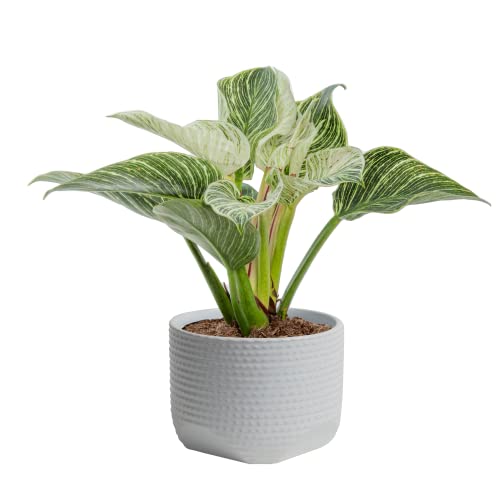







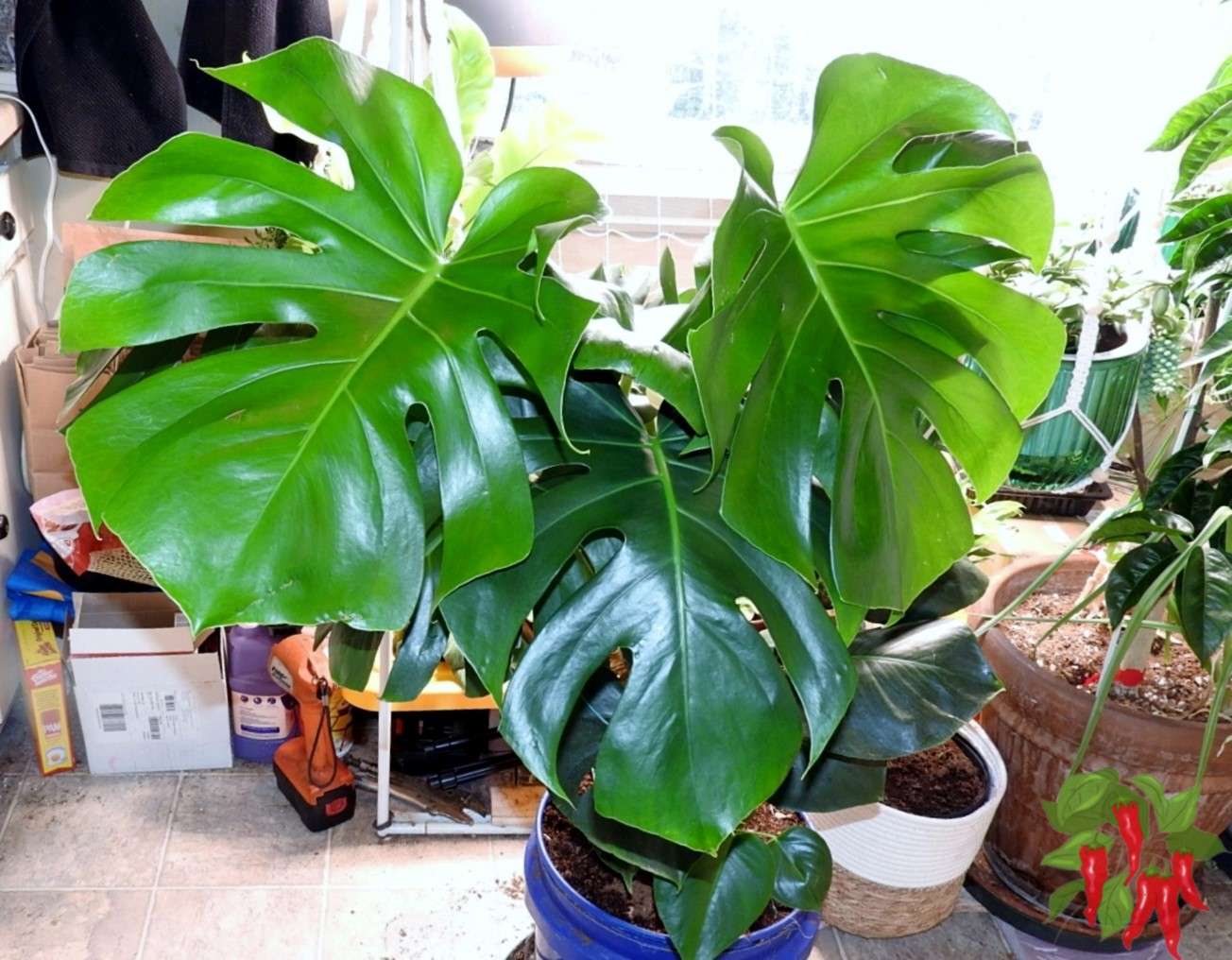
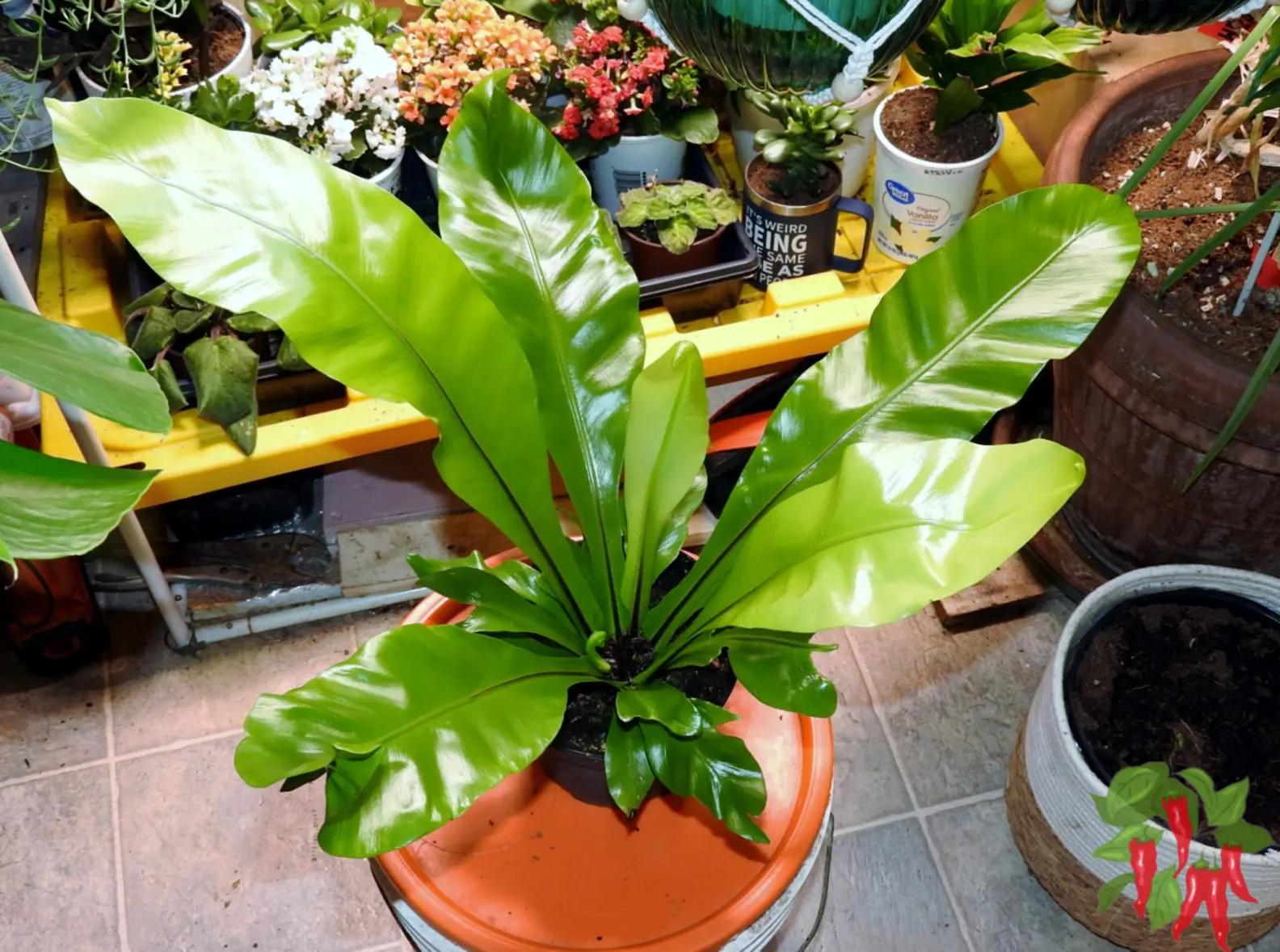
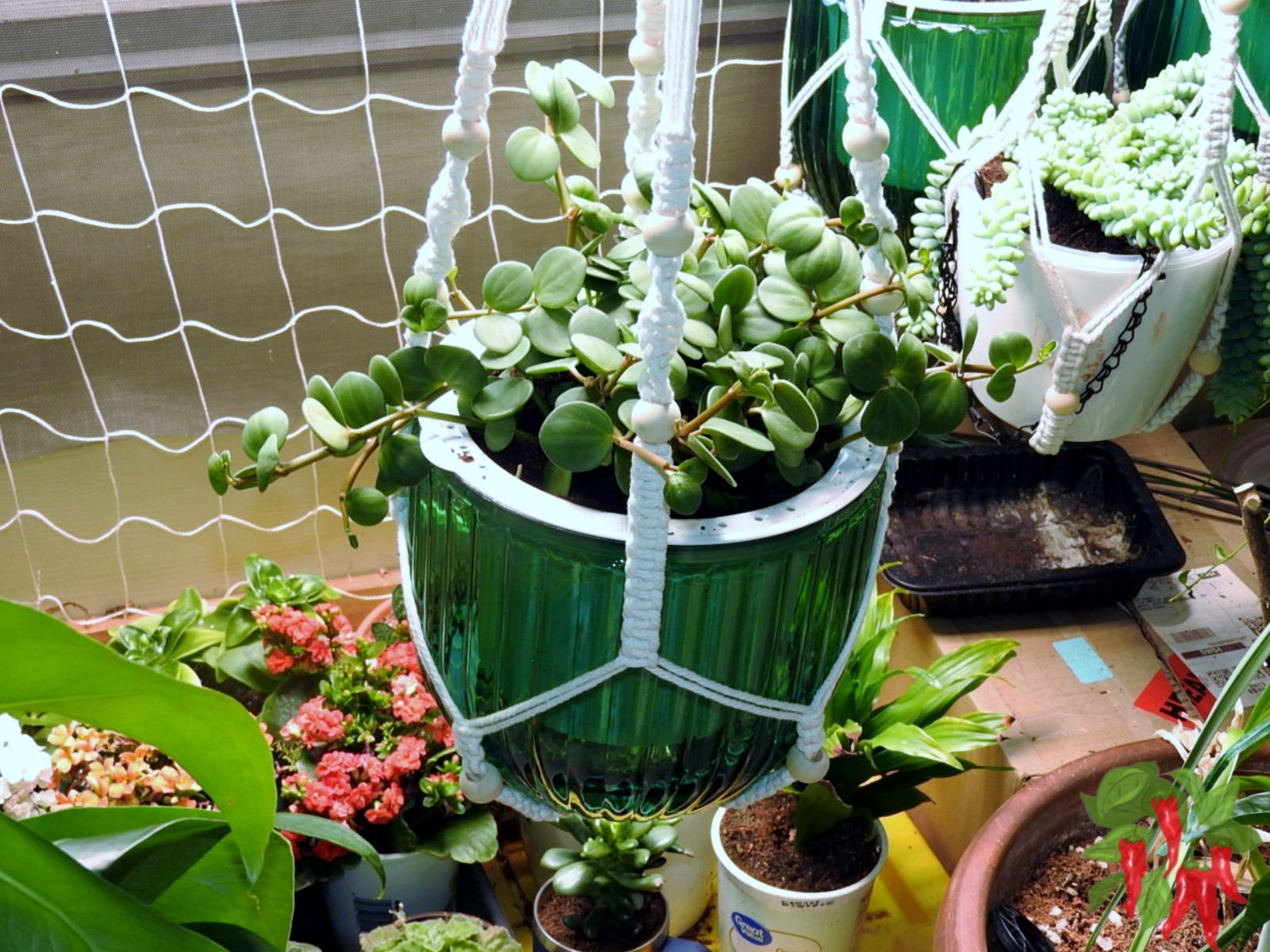
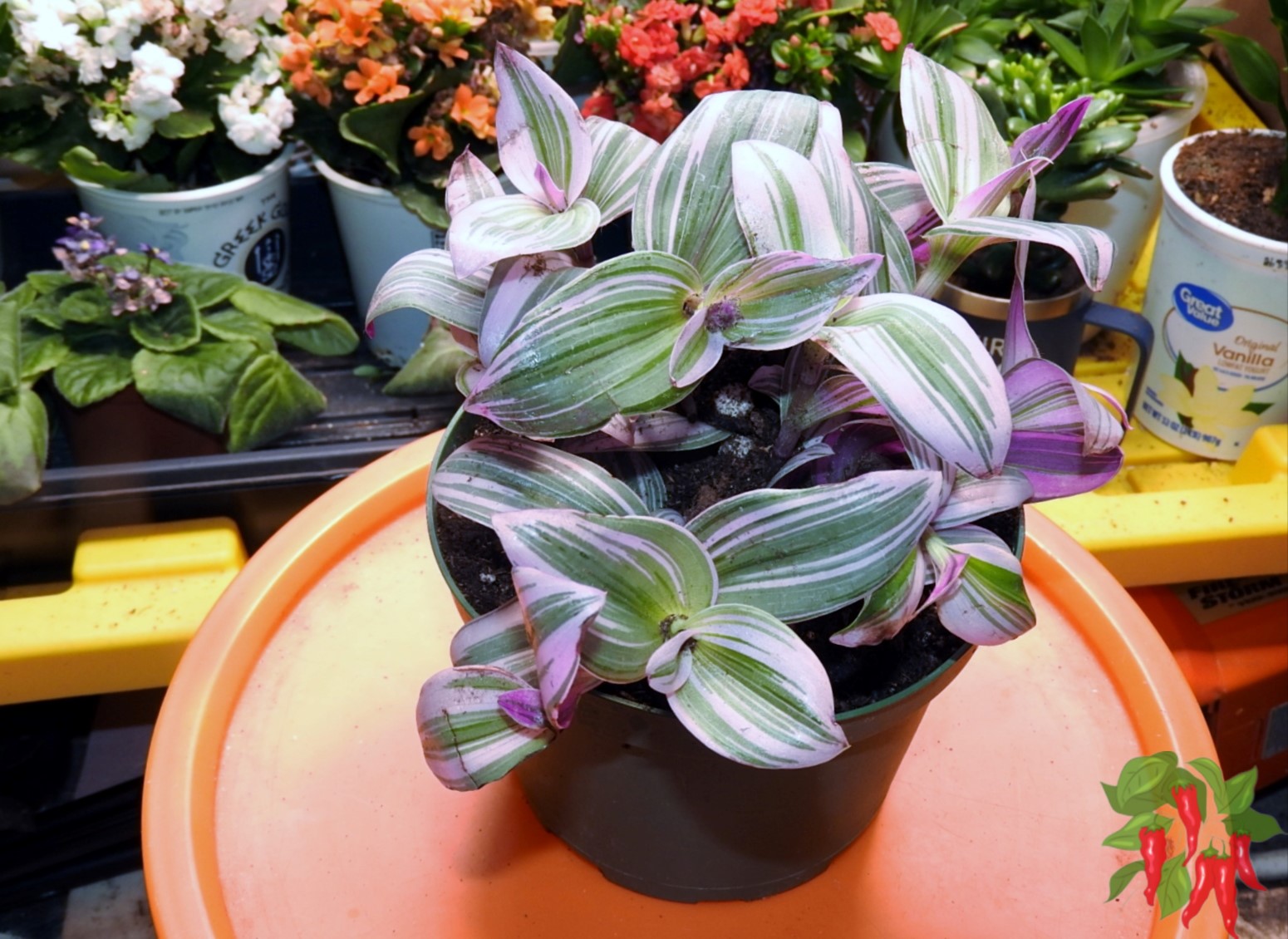
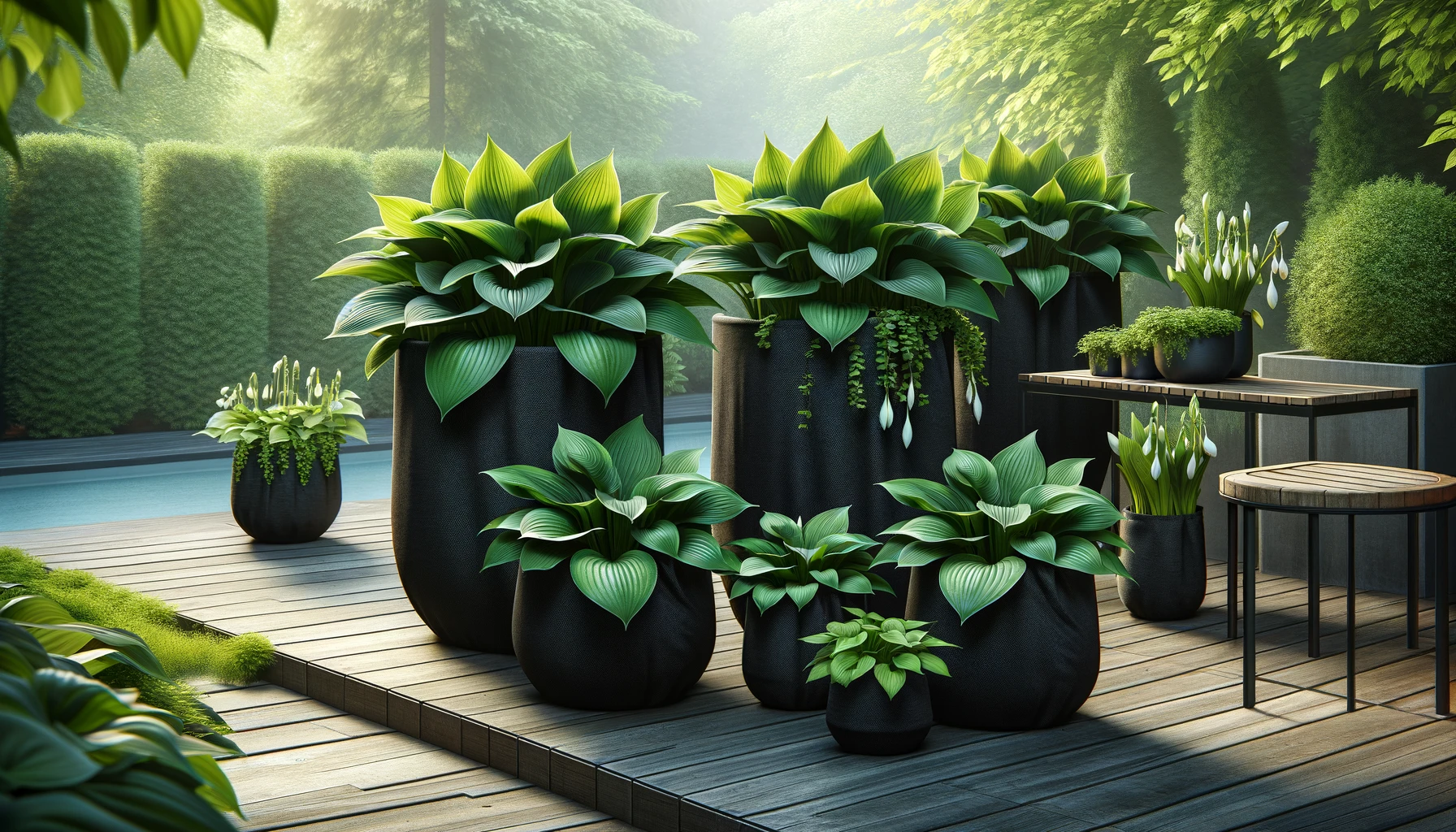
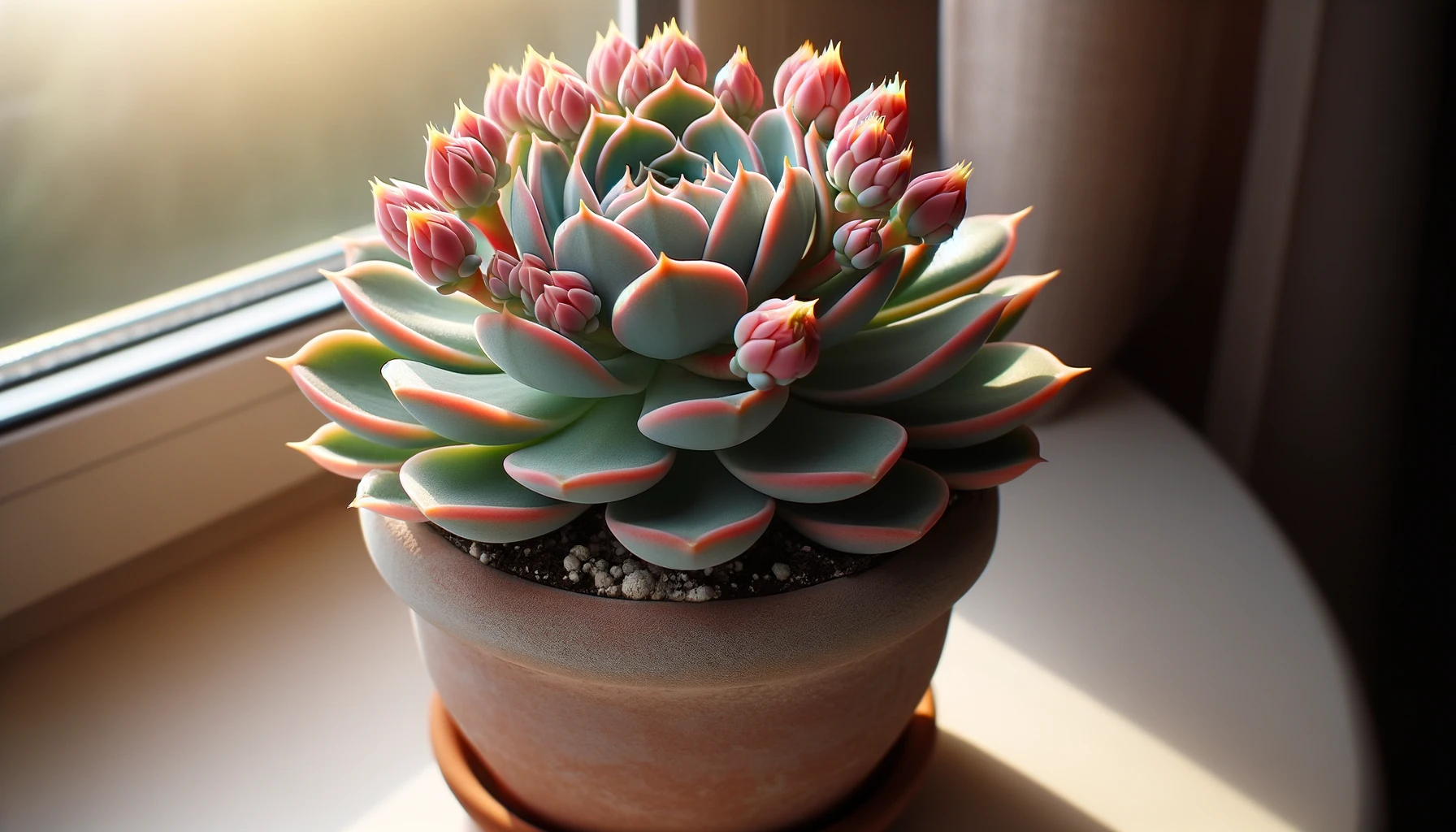
 Steve S. is the creator of
Steve S. is the creator of